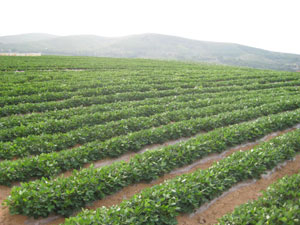China about to cut its corn planting area by over 1 million ha
Publish time:9/15/2017 12:00:00 AM Source: CCM
Information collection and data processing: CCM For more information, please contact us
China will expand its trials of crop rotation and fallow systems this year as part of efforts to facilitate the green development of agriculture. According to market intelligence firm CCM, in 2017, the trial crop rotation and fallow field area will reach 800,000 ha, up 389,333 ha over 2016.

China is exploring crop rotation and fallow systems to relieve the burden on its limited arable land, which feeds the country’s huge population of more than 1.38 billion.
As part of the trial program, the crop farming structure optimization will be targeted. In 2016, the planting area of grain corn was reduced by more than 2 million ha and that of soybean increased by more than 600,000 ha. The country will likely cut its corn planting area by over 1 million ha in 2017, so as to relieve the huge pressure from corn reserves.
The third trial program is regarding high efficient utilization of resources. In Hebei Province, the trial fallow system of wheat in the groundwater funnel region reduced water usage by 180 m3 and mining groundwater by 320 million m3. In Jilin Province, the corn-soybean rotations in the eastern cold area reduced fertiliser and pesticide use by 30%.
As for fallow, USD1,138/ha was provided for the one-season fallow in Hebei's groundwater funnel region and ecologically degraded areas in the Southwest and Northwest. A further USD1,821/ha was provided for the two-season fallow in Hunan's heavy metal contaminated areas.
The measures will help China face ecological pressures, push forward agricultural transformation and realize sustainable growth.
People who read this article also read what the article
- Pyrethroid see price edge up, yet most insecticides have price lower in Nov. 2023/12/01
- Jan. sees most fungicide TC prices drop and weak market persist 2024/02/02
- Anhui Huilong: chlorantraniliprole TC and intermediate project to go into operation in 2024 2023/11/24